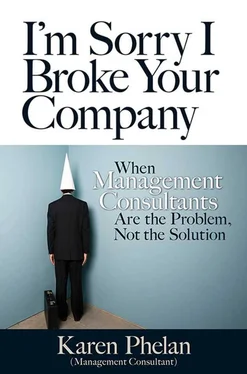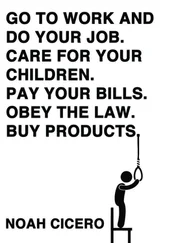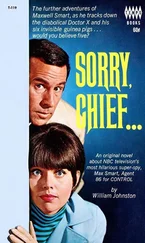Karen Phelan - I'm Sorry I broke Your Company
Здесь есть возможность читать онлайн «Karen Phelan - I'm Sorry I broke Your Company» весь текст электронной книги совершенно бесплатно (целиком полную версию без сокращений). В некоторых случаях можно слушать аудио, скачать через торрент в формате fb2 и присутствует краткое содержание. Город: San Francisco, Год выпуска: 2013, ISBN: 2013, Издательство: Berrett-Koehler Publishers, Жанр: management, popular_business, на английском языке. Описание произведения, (предисловие) а так же отзывы посетителей доступны на портале библиотеки ЛибКат.
- Название:I'm Sorry I broke Your Company
- Автор:
- Издательство:Berrett-Koehler Publishers
- Жанр:
- Год:2013
- Город:San Francisco
- ISBN:978-1-60994-740-8; 978-1-60994-741-5
- Рейтинг книги:3 / 5. Голосов: 1
-
Избранное:Добавить в избранное
- Отзывы:
-
Ваша оценка:
- 60
- 1
- 2
- 3
- 4
- 5
I'm Sorry I broke Your Company: краткое содержание, описание и аннотация
Предлагаем к чтению аннотацию, описание, краткое содержание или предисловие (зависит от того, что написал сам автор книги «I'm Sorry I broke Your Company»). Если вы не нашли необходимую информацию о книге — напишите в комментариях, мы постараемся отыскать её.
I'm Sorry I broke Your Company — читать онлайн бесплатно полную книгу (весь текст) целиком
Ниже представлен текст книги, разбитый по страницам. Система сохранения места последней прочитанной страницы, позволяет с удобством читать онлайн бесплатно книгу «I'm Sorry I broke Your Company», без необходимости каждый раз заново искать на чём Вы остановились. Поставьте закладку, и сможете в любой момент перейти на страницу, на которой закончили чтение.
Интервал:
Закладка:
The information about Michael Maccoby was from a January 2004 article in Harvard Business Review called «Narcissistic Leaders: The Incredible Pros, the Inevitable Cons.» He also has a book called Narcissistic Leaders: Who Succeeds and Who Fails (2007), but I haven't read it.
Chapter 8
The information on Frederick Taylor is from Taylors Principles of Scientific Management and Stewart’s The Management Myth, as well as a couple of articles from websites with biographical information: «Frederick Taylor and Scientific Management» ( http://www.netmba.com/mgmt/scientific/) and «Frederick Winslow Taylor» ( http://www.eldritchpress.org/ fwt/ taylor.html).
Champy and Hammer mention in their book Reengineering the Corporation that 50–70 percent of reengineering efforts fail. They blame a lack of knowledge and ability for this failure rate and categorize reengineering efforts as high risk.
A variety of sources cite high failure rates for mergers and acquisitions. «The Big Idea: The New M&A Playbook» at the Harvard Business Review website ( http://hbr.org/2011/03/the-big-idea-the— new-ma-playbook/ar/1) cites 70–90 percent failure rate.
The incentive compensation failure is from Hodak’s and Cooper, Gulen, and Rau’s studies.
The rest of the chapter is my advice.
Resource A: A Measure of Truth
You didn’t expect to read a book by a management consultant and not have some sort of scorecard, did you? I thought I would summarize what I know to be true about conventional management wisdom based on my decades-long career, which includes reading tons of business books and research. I have to put a disclaimer on the accuracy of this information because I cant be expected to be familiar with all the research in all these areas, but I am putting a stake in the ground in the hopes that this will become a living document. Oops, I slipped. Sorry about that; old habits die hard. Let me rephrase: you can find this scorecard on the web at imsorryibrokeyourcompany.com and add any research or other theories you think should be included.
The Truthometer


Resource В: The Method of Truth
Although management is not a science, we can still learn from science. In fact, I love science, and I love learning from it. What science can most offer to businesses is not theories but the method in which science is conducted. The purpose of science is to derive the truth. Physics seeks to find the underlying laws governing the physical world, from atomic particles to the origins of the universe. Biology seeks to understand life. Chemistry seeks to understand how molecules interact. Science is not about creating a set of laws; It's about understanding how things work and changing the laws based on new information. Many people seem to confuse ideologies with scientific theories. Theories change, while ideologies do not. Astrology and creationism are not science. They are static belief systems that don't seek to find underlying truths. They try to bend theories to conform to the beliefs. Our current state of management «science» also doesn't seem to be very interested in finding the truth.
Although I have spent most of this book debunking popular methodologies, one proven method should be used much more often in businesses, a method that could be used to derive the truth about how people work — the scientific method.
Scientific method
Usually the scientific method is written as four steps, but sometimes people break the four steps down into finer detail with six or seven resulting steps. I'm going with the four-step approach I was taught in grade school.
1. Research, analyze, investigate, and define the problem
I don't know if this is symptomatic of the American culture, but we are so action oriented and impatient to get to the solutions that we spend very little time understanding the problem. The first step of the scientific method is to define the problem, and to define the problem, you need to understand it. How you define the problem sets the course of all the following actions. Finding the root causes of problems and fixing those can save countless hours and money compared to constantly addressing the symptoms of problems. This habit of addressing symptoms always results in new symptoms that need fixing. Spending a little time finding out the «why» before moving on to the «how» can save time in the long run.
Several years ago, I was asked to participate in a cross-functional, problem-solving session to brainstorm ideas on how to get more employees involved in community volunteer activities. The session came up with some very creative public relations ideas and actions to take. However, no one spent any time researching why employees weren't getting involved. Instead, according to the consultants advice to phrase problems in a «how to» format to solicit actions, we worked on the wrong problem. The real issue was that employees equated involvement in these activities with being a low-level or unimportant employee. In addition, many employees thought that these activities were meant to provide leadership opportunities for the administrative staff. Our list of brainstorming ideas and actions didn't try to change that perception. All we had to do to solve the problem was to get some senior management involved in these activities.
2. Develop hypotheses based on the research
My experience with human-caused problems is that often you’ll find the cause of the problem in the first step, so this one isn’t often needed. However, when you can’t easily find the solution, developing hypotheses helps expand your thinking. Notice that this step involves multiple hypotheses based on your research, not just one. The problem with our thinking is that we like to narrow down our options too early and adopt an initial solution just because it is the first one that might work. Then, once we’ve adopted it as the solution, we are unlikely to change our minds even with new information. If you formulate multiple hypotheses, you expand your search and have a higher probability of finding the correct option than if you narrow down your solutions early on.
3. Experiment and test the hypotheses
In new product development, the key to success is fast failure, not early perfection. The point is to figure out as quickly as possible all the product features that don’t work and eliminate those from further inquiry. Management theorists need to adopt the habit of eliminating unsound theories. Instead, each model and method adds to the body of knowledge, and businesses try to implement everything. Worse, one clever consultant finds a new way of combining unrelated ideas and then other consultants build on it until it becomes a mishmash of conceptual frameworks. No manner of adjustment is ever going to get a faulty assumption to work right. Scientists know that when a hypothesis doesn’t work, they need to move on to the next one.
4. Discern findings, formulate conclusions, and repeat step 3
Most often, this step is written as just «formulate conclusions.» I have separated out findings from conclusions because I have found that many businesspeople don't understand the difference. The scientific method is an iterative process; it is unlikely that one experiment will provide enough evidence to allow you to draw conclusions. Rather, it should provide information, aka findings, on where to investigate further. This point is becoming more important because the ability to survey large groups of people and perform a variety of data analyses on the information gathered has become infinitely easier in the last decade. However, people frequently misinterpret the data and see conclusions where none exist. The term «highly correlated» is bandied about as if it means two data points have an irrefutable cause-and-effect relationship, but two data points could be highly correlated due to a number of inconclusive reasons.
Читать дальшеИнтервал:
Закладка:
Похожие книги на «I'm Sorry I broke Your Company»
Представляем Вашему вниманию похожие книги на «I'm Sorry I broke Your Company» списком для выбора. Мы отобрали схожую по названию и смыслу литературу в надежде предоставить читателям больше вариантов отыскать новые, интересные, ещё непрочитанные произведения.
Обсуждение, отзывы о книге «I'm Sorry I broke Your Company» и просто собственные мнения читателей. Оставьте ваши комментарии, напишите, что Вы думаете о произведении, его смысле или главных героях. Укажите что конкретно понравилось, а что нет, и почему Вы так считаете.












